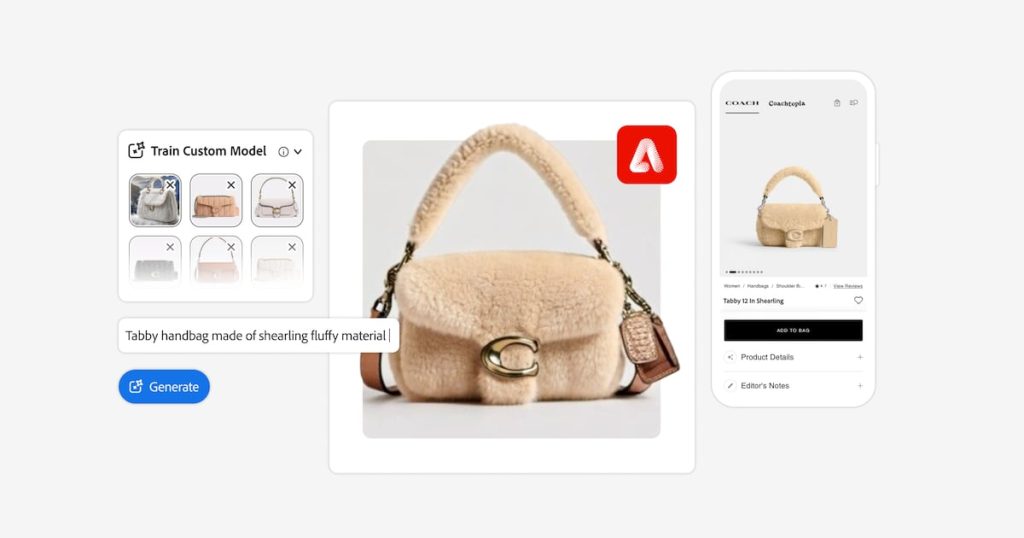
Last week was a significant one in the human creativity versus artificial intelligence debate.
On Tuesday, OpenAI released ChatGPT 4.0’s new image generator, which can create pictures done in popular animation styles, like Pixar or Japanese animation company Studio Ghibli (and quickly went viral). That same day, H&M released its first campaign featuring an AI-generated version of model Vilma Sjöberg.
The reaction to both was mixed: H&M chief creative officer Jörgen Andersson acknowledged the use of “digital twins” of models would court controversy; 74 percent of respondents in an Instagram poll by The Business of Fashion voted that brands should be banned from using AI-generated models. And even as a tidal wave of ChatGPT-made cartoonish images flooded social media, there were also growing questions over whether the innovation would end up being a boon to the creative process or a threat to designers.
There’s reason to be concerned: A 2023 report by market research company Forrester estimated that 7.5 percent of advertising agency roles in the US would be automated by 2030. Particularly vulnerable are clerical and market research roles. It’s already having an impact: “A lot of us are losing jobs [due to AI],” said Yana Sheptovetskaya, a photographer and creative director for a number of beauty brands.
But despite resistance, the embrace of AI in marketing feels increasingly inevitable: 79 percent of marketing teams are planning to expand AI adoption in 2025, according to a report by AI marketing platform Jasper. Fashion companies including Revolve, Coach and Anthropologie have embraced AI tools across a variety of marketing functions, including product discovery, digital twin creation, SEO and more.
The goal, for most, is to harness AI as a tool to support human creativity rather than replace it. The ad agency VMGroupe, which uses AI to visualise concepts, revitalise content and create content from scratch, launched its own AI content creation suite last week with the goal of helping its clients view AI as an “intern” able to assist with their creative processes, rather than something to be feared or relied on too heavily.
“Anything that’s new, revolutionary, cool, disruptive and different is going to upset people. It’s the nature of evolution,” said Addia Cooper-Henry, VMGroupe’s founder. “AI will never replace us. Don’t fear things that can help expand your brilliance … How do you evolve and adapt your role?”
The Content Creation Quandary
Already, AI-assisted content creation has emerged as one of the most popular ways for marketers to tap its power. Copywriting, for instance, is one of Jasper’s most sought-after applications. It can be used for everything from writing descriptions across product catalogues for brands like Adidas, to Ulta Beauty using it to generate a campaign brief and corresponding copy for various facets of its 2024 summer beauty sale, including mobile marketing messages, emails and landing pages.
AI-generated content, however, is only as strong as the quality of its human input. According to Cooper-Henry, the process of developing a concept and framework and then creating visuals using AI is similar to putting together the script for a real campaign.
“With AI, we can actually show, almost to perfection, what our minds are thinking, and then share that with a marketer,” said Cooper-Henry, adding that AI can take cues from archival imagery, but update it for a modern consumer. “Now, all of a sudden, you have a whole new perspective and campaign and content that’s obviously going to go viral, but still fully imbued with your brand DNA.”
Sheptovetskaya pointed out that having a developed knowledge of historic and artistic references, as well as the creative vision to piece them together in original ways, is what will enable marketers to craft prompts for AI-generated imagery that can trigger an emotional response in the way fashion content should. That said, she also noted how easily she was able to create images in the style of her own photography using ChatGPT 4.0, raising further legal questions around creative IP when referencing specific artistic styles.
“We’re going to get so much trash, but then eventually the trash will take itself out,” she said, comparing the current situation to the advent of computer-generated music, which has become broadly accepted and appreciated. “At the end of the day, we’ll actually end up with really good, probably satisfying content. AI or not AI, the strongest ones survive.”
Using AI purposefully is also important. Coach, for instance, uses Adobe Firefly to create digital twins — virtual replicas — of its top products by training the model using its own brand codes. While the digital twins can be used to further the reach of paid social content, they are also used to gather consumer feedback on preferred styles in focus groups to enhance decision making around product development and merchandising.
A Behind-the-Scenes Toolkit
Beyond content creation, AI presents plenty of opportunity for marketers behind the scenes, to simplify their workstreams and automate rote tasks.
Data analysis and insights are a core marketing area that previously required hours of manual labour, but can now be supported by AI. The technology can quickly analyse large amounts of data, such as customer feedback, to piece together trends that employees can then assess.
With AI, they can use “the data at scale to get to more refined, smarter insights more quickly, and then [use their] human brain to go, okay, what does that mean?” said Jarrod Bull, managing director of AI-powered creative agency MachWon.
Anthropologie’s team, which currently uses Jasper to improve SEO, initially spent 20 percent of its time automating keyword optimisation and 80 percent of its time fine-tuning the language so the platform could improve its understanding of the brand’s tone. Since implementation, the numbers have flipped to 60 percent automation and 40 percent validation, freeing the team up to both extend its SEO capability beyond fashion and into its home division, and to strengthen its understanding of the search landscape’s evolution. The retailer is currently trialling other AI-enabled platforms, including one meant to drive operational efficiencies in its reporting, analytics and planning, as well as testing AI’s ability to aggregate customer feedback.
Third-party AI-powered shopping platforms like Daydream are also becoming fertile ground for brands to gain in-depth insights about their shoppers, including the other brands they shop for, search terms used and even granular details like how decisive they are.
Revolve deployed AI to improve product search and recommendations, broaden the reach of its performance marketing efforts through improved product targeting and promotion and enhanced customer service with more streamlined inquiry routing and management, which ultimately boosted total orders and average order value by 2 percent each in fiscal year 2024, according to a Jefferies equity research report. Its AI innovation in consumer search and on its e-commerce website is also estimated to deliver seven-figure incremental revenue on an annualised basis, according to Daniel Wu, senior vice president of business intelligence for Revolve.
Still, even in the face of technological advancement, consumers continue to value human creativity. Marketers should be wary of public reaction to AI, and manage how to benefit from it without alienating consumers. Consider where the technology can handle repetitive tasks to free up their time for deeper customer connection and play a supporting role in content creation while ensuring that the brand team’s creative vision remains at the helm.
“Brands are living organisms, and so as consumer behaviour changes, we also then have to change with it, which I think will require, and continue to require, that human touch, that human oversight,” said Barbra Sainsurin, global executive director of brand and digital marketing for Anthropologie.








